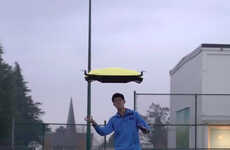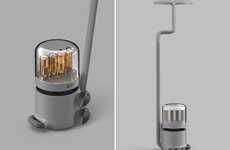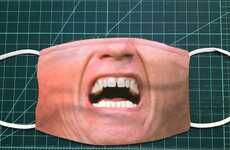Irrelevant Inventions that Couldn't Crack the Real World
Andrew Robichaud — May 14, 2009 — Unique
References: listverse & trendhunter
Getting a patent is really a very simple task. The hope for a patent is that a magnificent invention worth millions comes out of the whole endeavor.
These patents (as you may have already figured out) simply did not make the cut.
The inventions behind these patents are not completely irrelevant, and some actually appear as rather ingenious.
The simple truth is that you would probably never need a clock for an animal, electric soap, or a head rest for a urinal (many will beg to differ on that one).
Based on these patents in the gallery, I’ll let you be the judge.
These patents (as you may have already figured out) simply did not make the cut.
The inventions behind these patents are not completely irrelevant, and some actually appear as rather ingenious.
The simple truth is that you would probably never need a clock for an animal, electric soap, or a head rest for a urinal (many will beg to differ on that one).
Based on these patents in the gallery, I’ll let you be the judge.
Trend Themes
1. Invention Irrelevance - Identify and analyze patents for inventions that did not meet practical or market needs.
2. Ingenious but Impractical - Explore patents that demonstrate clever thinking but lack real-world usefulness.
3. Questionable Patents - Examine patents that raise doubts about the effectiveness or necessity of the invention.
Industry Implications
1. Consumer Goods - Discover opportunities to disrupt the consumer goods industry by developing practical and innovative inventions.
2. Technology - Explore ways to disrupt the technology sector by creating inventions that solve real-world problems and meet market needs.
3. Healthcare - Identify potential disruptive innovation opportunities in the healthcare industry by examining patents for inventions that could improve patient care or streamline processes.
1.3
Score
Popularity
Activity
Freshness






















